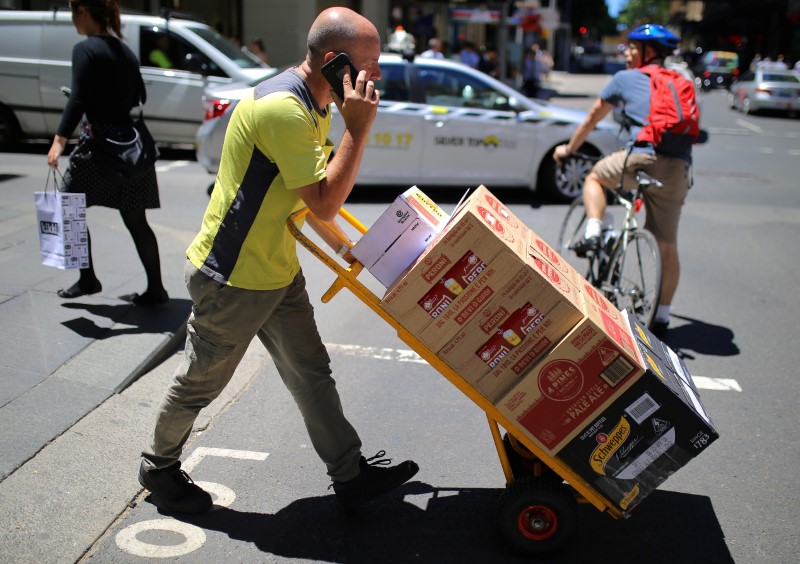By Swati Pandey
SYDNEY (Reuters) – Australian wages growth stayed stubbornly weak last quarter in a disappointing outcome for household consumption and provided further evidence of ample spare capacity in the country’s labor market despite a strong run of jobs lately.
The wage price index rose 0.6% in the three months ended June, ticking up from a benign 0.5% in the March quarter, led largely by increases in the public sector, Australian Bureau of Statistics (ABS) data showed on Wednesday.
Annual wage growth at 2.3% has remained steady since the quarter-ended September 2018 and way below policymakers desire of “3 point something”.
The miserly pace of wage growth has weighed on domestic consumption and was a major reason the Reserve Bank of Australia (RBA) cut interest rates in June and July to a record low of 1%.
The RBA has shown willingness to move again if needed. Senior officials have also publicly discussed the possibility of unconventional monetary policies in Australia, including negative interest rates and quantitative easing.
“The data largely confirms the RBA’s view that spare capacity is limiting upward pressure on wages, and the economy needs to generate more jobs to absorb the extra workers,” said Sarah Hunter, chief economist at BIX Oxford Economics.
“Given this, we still expect the Board to cut the cash rate again this year, to 0.75%, and possibly one more time in early 2020.”
Financial markets imply the RBA’s cash rate at 0.5% by early next year. <0#YIB:>
With Wednesday’s data barely moving the chance of future rate cuts, the Australian dollar The data showed annual private sector wage growth slowed further to 2.3% from a four-year high of 2.5% in March while government services did the heavy lifting. Annual public sector wage growth was a solid 2.6%. Electricity, gas, water and waste services and health care and social assistance enjoyed the highest quarterly pay rises of 0.7% while in the information media and telecommunications the wage increase was a piddly 0.1%. Wage weakness is a global phenomenon linked to everything from the rise of China, the fall of union membership, technological change, job casualization and the increasing concentration of market power in the hands of a few giant corporations. RBA policymakers are still holding out hope for an eventual recovery in wage power.
Further progress requires the labor market to keep tightening and a survey of business from NAB this week had some potentially troubling news on that front.
The survey’s main measure of employment fell sharply to below average levels, implying a slowing in job growth from here.
“We expect the unemployment rate to rise further over the coming months which should keep a lid on wage pressures,” said Capital Economics economist Marcel Thieliant.
“The upshot is that wage growth may fall back to 2% in 2020.”
(Reporting by Swati Pandey; Editing by Shri Navaratnam)



















